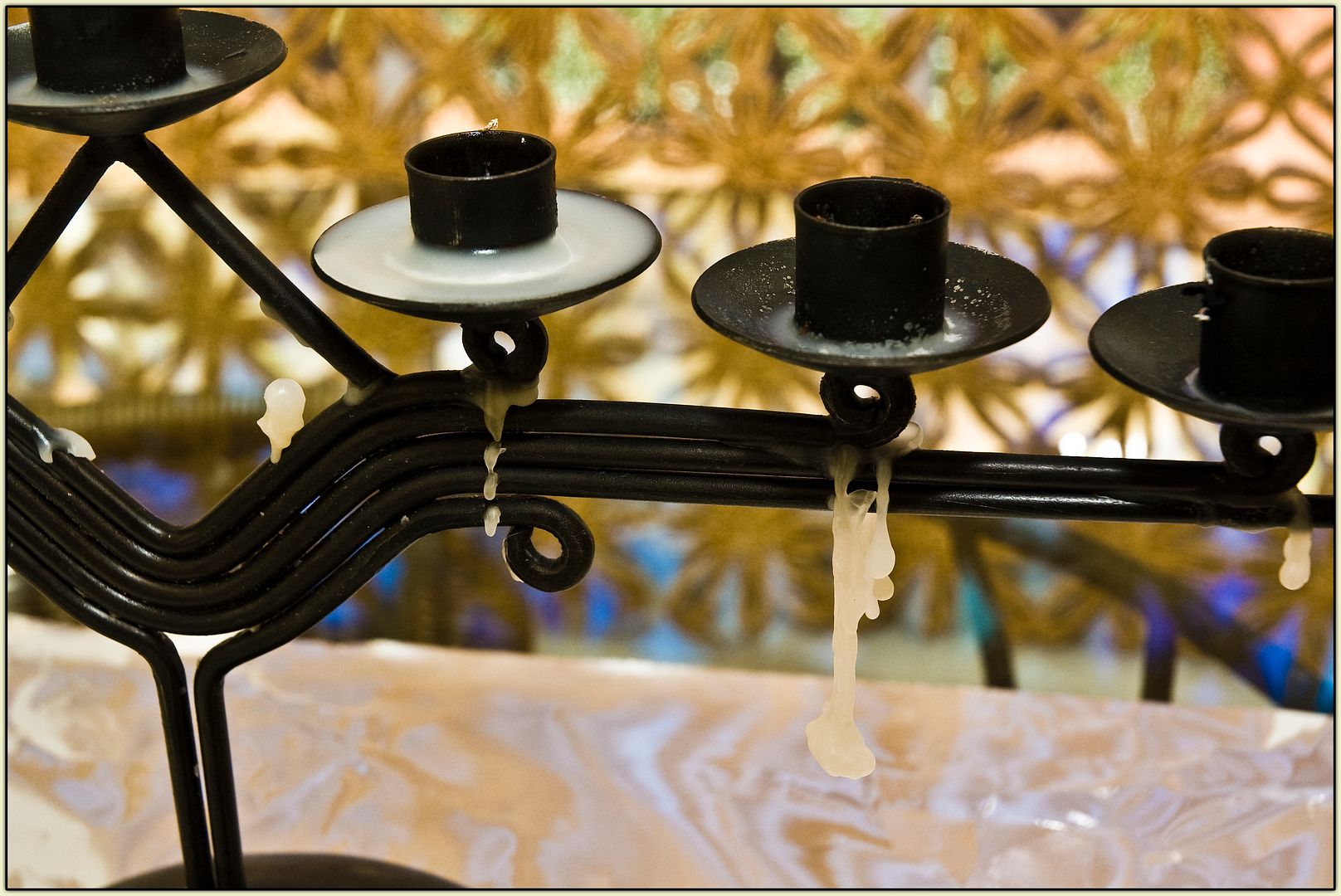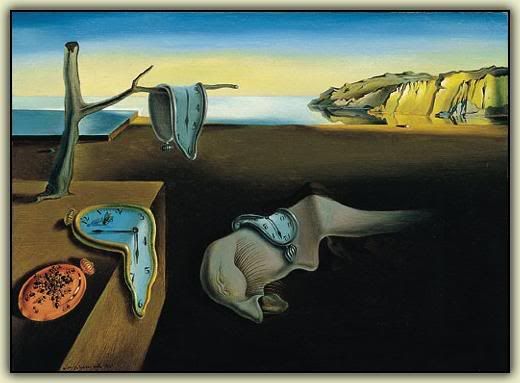[Sung to the tune of “Dixie Chicken”]
I’ve seen the bright lights of Mumbai
And the Bannerjee Hotel
And underneath a street lamp, I met a Gujarati girl
Oh, she took me to the Ganges where she cast her spell
And in that Mumbai moonlight, she sang this song so well:
Can I be your Mango Lassi
You can be my Pappa Dum
And we can be together
And make num num num
And make num num num
We made all the hotspots,
My rupees flowed like wine
Then that low-down hemp from Hyderabad began to fog my mind
And I don’t remember incense, or the money I put down
On the corrugated tin roof on the house at the end of town
Oh, but boy do I remember the strain of her refrain
And the nights we spent together
And the way she called my name
Can I be your Mango Lassi
You can be my Pappa Dum
And we can be together
And make num num num
And make num num num
Many years since she ran away
Yes that sitar player sure could play
She always liked to sing along
She always handy with a song
But then one night in the lobby of the Bannerjee Hotel
I chanced to meet a bartender who said he knew her well
As he handed me a bev’rage he began to hum a song,
And all the boys there at the bar began to sing along:
Can I be your Mango Lassi
You can be my Pappa Dum
And we can be together
And make num num num
And make num num num
And make num num num
[Apologies to Little Feat]
Monday, January 30, 2017
Wednesday, January 25, 2017
MARY BITES THE DUST

Mary Tyler Moore (1936-2017) and her longtime acting foil Dick Van Dyke, in a 1961 CBS publicity still.
Q: Who can turn the word on with her smile?
A: Not Mary Tyler Moore.
- Houston Steve
I, along with millions of others, was saddened to hear of the passing of Mary Tyler Moore today due to complications of pneumonia. She was 80 years old.
My first awareness of Ms. Moore was when she played Laura Petrie on The Dick Van Dyke Show, an exceptionally witty household sitcom, a show that also introduced me to Carl Reiner. But her greatest impact on the American consciousness was as Mary Richards, the spunky career woman of the eponymous Mary Tyler Moore Show. Even more remarkable was the fact that she stood out in a cast that included Ted Knight, Gavin McLeod, Betty White, Cloris Leachman, and Valerie Harper.
One of the most memorable episodes of The Mary Tyler Moore Show was one from the sixth season. In “Chuckles Bites the Dust,” Mary and her coworkers attend the funeral of one Chuckles the Clown, who suffers a death that can only be described as befitting as clown: While dressed as Peter Peanut during the Circus Day parade, he is killed by a rogue elephant that attempts to shell him. Mary is appalled as her colleagues respond to the tragedy by cracking an endless stream of jokes before the funeral. But when the funeral begins, it’s Mary who cannot keep a straight face - until the minister urges everyone to follow Mary’s example and laugh. Of course, Mary then bursts into tears.
When I heard the news about Ms. Moore, I wondered whether anyone would laugh at her funeral. I think she’d like that.
Monday, January 16, 2017
AVE ATQUE VALE, CIRCENSES
’Twas tea-time at the circus: King Jimi, he was there
Through hoops he skipped, high wires he tripped, and all the while the glare
Of the aching, baking spotlight beat down upon his cloak
And though the crowd clapped furiously they could not see the joke
’Twas tea-time at the circus, though some might not agree
As jugglers danced, and horses pranced, and clowns clowned endlessly
But trunk to tail the elephants, quite silent, never spoke
And though the crowd clapped desperately they could not see the joke
- Procol Harum, from “In Held ’Twas In I”
“The people who have conquered the world have only two interests – bread and circuses” - Decimus Junius Juvenalis
“Heffalump is better than none.” - Winnie the Pooh
It’s getting harder and harder to take tea at the circus, especially so now that the famous Ringling Brothers and Barnum & Bailey Circus plans to fold its tents in May of this year after 146 years in operation.

Who’s laughing now?
The circus - at least, in the form we’ve all come to know it - is a most peculiar and somewhat archaic form of entertainment. The Romans had circuses, of course, but they were typically bloody affairs: gladiatorial combat, people facing off against wild animals, chariot races, and similar mostly violent amusements. And no Roman circus was complete without the beloved “clowns exiting a chariot” act.
Modern circuses typically have elements in common: trained elephants, wild beasts, acrobats, horse-and-rider acts, and clowns, with the action taking place in one or more circular arenas - thus, “circus.” Sometimes this is accompanied by a carnival-style midway with rides and games.
Circuses are, by nature, traveling shows: after entertaining the villagers in a given spot, they would literally pull up stakes and move to another town - sometimes in haste. “Running away and joining the circus” was a real thing, back when the occasional visit of the circus to a backwater town seemed to offer the promise of an exciting life of travel and adventure. In reality, what it mostly offered was abuse, low and very intermittent wages, physical danger, and mountains of elephant shit. Always elephant shit. And thus, Esteemed Readers, it offered a veritable Lesson in Life.
I still remember - with as much crystal clarity as can be mustered after close to sixty years - my first experience with a real, honest-to-goodness circus. A traveling show (Cole Brothers? Clyde Beatty? I cannot recall) came to our town and set up shop in a large field, back when such things as large fields still existed there. Copious amounts of hay were laid down; then the tents went up. Dad - Eli, hizzownself - took me and The Other Elisson there one evening, accompanied by our next-door neighbor and their two boys Jon and Chris, who were roughly the same ages as we were. There were elephants, wild animals, clowns, trapeze artists, and acrobats. There was a ringmaster just like Claude Kirchner on Terrytoon Circus, a TV show we watched religiously in the afternoons mostly owing to its time slot immediately following Mickey Mouse Club. And most clearly of all, I remember the guy getting shot out of a cannon.
Yes, that was a pretty standard circus act - The Human Cannonball. He would get catapulted out of a device that looked a whole lot like a real cannon (provided you didn’t look too closely), fly through the air and through a hoop to land on nice, cushy netting. Of course, gunpowder or other pyrotechnics were used only for sound effects, compressed air or a spring providing the real propulsive force - but we kids didn’t know the difference. The sound (“BOOM!”) was loud enough to send our little neighbor Chris into a fit or hysterical weeping, but all was well after a dose of cherry sno-cone (most of which ended up on his nice white shirt, as I recall.)
The reason hay had been laid down became immediately apparent when the elephants came out. There was always some clown walking behind the huge beasts, vainly trying to keep up with their Prodigious Output with a shovel and bucket, but the hay served as a (mostly ineffective) way to neutralize the barnyard pong. At one point we were permitted to ride atop an actual elephant, which provoked little Chris to yet another bout of hysteria.
After that long-ago adventure, I never felt the burning urge to see the circus again... until the Ringling Brothers and Barnum & Bailey show landed in Atlanta in the mid-1980’s. By this time, our daughters were both at prime Circus-Viewing age, so off we went to the huge downtown venue where the show was to be held, vacant fields being both thin on the ground and insufficient for the job at hand. And it was all there: the clowns, the elephants, the wild beasts, the trapeze artists, the motorcycles speeding around in a spherical cage (human cannonballs having been taken off the menu), and the acrobats.
Ahh, the acrobats... one of whom performed an act in which she was suspended by her hair by a long cord, rotating and spinning high over the ring. She was there in the spotlight, a sparkling human jewel... and then she disappeared. Her hair had slipped out of its bindings and she had flown out of the cone of the spotlight, landing hard on the ground. We saw none of this - all we saw was the army of clowns, presumably released from the Volkswagens in which they had been imprisoned, trying to get our attention away from whatever terrible thing had just happened. We discovered later that the young lady acrobat had broken her neck... and we have never gone to the circus again.
What killed Ringling Brothers? There are, no doubt, plenty of explanations for the decline in ticket sales that ultimately doomed the show. Last year the elephants were dismissed, mainly due to ongoing outcries from animal rights activists... but that alone doesn’t explain it. I think the Ringling Brothers circus was a victim of its own success.
The circus - as I experienced it as a young snot-nose, anyway - was a personal experience. You sat in hastily erected bleachers. You smelled the hay, the elephant shit, the greasepaint of the clowns, the sweat of your fellow attendees. But the modern circus was a huge affair, mounted in humongous arenas like Madison Square Garden, or the Georgia Dome. And in our device-driven ADHD world where most kids would rather chase Pokemon than crack a library book, what chance does such an old-fashioned amusement delivery device stand?
Today, professional sports, politics, and Facebook have become the circenses to go with our panem, alas. (But you can keep the elephant shit.)
Through hoops he skipped, high wires he tripped, and all the while the glare
Of the aching, baking spotlight beat down upon his cloak
And though the crowd clapped furiously they could not see the joke
’Twas tea-time at the circus, though some might not agree
As jugglers danced, and horses pranced, and clowns clowned endlessly
But trunk to tail the elephants, quite silent, never spoke
And though the crowd clapped desperately they could not see the joke
- Procol Harum, from “In Held ’Twas In I”
“The people who have conquered the world have only two interests – bread and circuses” - Decimus Junius Juvenalis
“Heffalump is better than none.” - Winnie the Pooh
It’s getting harder and harder to take tea at the circus, especially so now that the famous Ringling Brothers and Barnum & Bailey Circus plans to fold its tents in May of this year after 146 years in operation.

Who’s laughing now?
The circus - at least, in the form we’ve all come to know it - is a most peculiar and somewhat archaic form of entertainment. The Romans had circuses, of course, but they were typically bloody affairs: gladiatorial combat, people facing off against wild animals, chariot races, and similar mostly violent amusements. And no Roman circus was complete without the beloved “clowns exiting a chariot” act.
Modern circuses typically have elements in common: trained elephants, wild beasts, acrobats, horse-and-rider acts, and clowns, with the action taking place in one or more circular arenas - thus, “circus.” Sometimes this is accompanied by a carnival-style midway with rides and games.
Circuses are, by nature, traveling shows: after entertaining the villagers in a given spot, they would literally pull up stakes and move to another town - sometimes in haste. “Running away and joining the circus” was a real thing, back when the occasional visit of the circus to a backwater town seemed to offer the promise of an exciting life of travel and adventure. In reality, what it mostly offered was abuse, low and very intermittent wages, physical danger, and mountains of elephant shit. Always elephant shit. And thus, Esteemed Readers, it offered a veritable Lesson in Life.
I still remember - with as much crystal clarity as can be mustered after close to sixty years - my first experience with a real, honest-to-goodness circus. A traveling show (Cole Brothers? Clyde Beatty? I cannot recall) came to our town and set up shop in a large field, back when such things as large fields still existed there. Copious amounts of hay were laid down; then the tents went up. Dad - Eli, hizzownself - took me and The Other Elisson there one evening, accompanied by our next-door neighbor and their two boys Jon and Chris, who were roughly the same ages as we were. There were elephants, wild animals, clowns, trapeze artists, and acrobats. There was a ringmaster just like Claude Kirchner on Terrytoon Circus, a TV show we watched religiously in the afternoons mostly owing to its time slot immediately following Mickey Mouse Club. And most clearly of all, I remember the guy getting shot out of a cannon.
Yes, that was a pretty standard circus act - The Human Cannonball. He would get catapulted out of a device that looked a whole lot like a real cannon (provided you didn’t look too closely), fly through the air and through a hoop to land on nice, cushy netting. Of course, gunpowder or other pyrotechnics were used only for sound effects, compressed air or a spring providing the real propulsive force - but we kids didn’t know the difference. The sound (“BOOM!”) was loud enough to send our little neighbor Chris into a fit or hysterical weeping, but all was well after a dose of cherry sno-cone (most of which ended up on his nice white shirt, as I recall.)
The reason hay had been laid down became immediately apparent when the elephants came out. There was always some clown walking behind the huge beasts, vainly trying to keep up with their Prodigious Output with a shovel and bucket, but the hay served as a (mostly ineffective) way to neutralize the barnyard pong. At one point we were permitted to ride atop an actual elephant, which provoked little Chris to yet another bout of hysteria.
After that long-ago adventure, I never felt the burning urge to see the circus again... until the Ringling Brothers and Barnum & Bailey show landed in Atlanta in the mid-1980’s. By this time, our daughters were both at prime Circus-Viewing age, so off we went to the huge downtown venue where the show was to be held, vacant fields being both thin on the ground and insufficient for the job at hand. And it was all there: the clowns, the elephants, the wild beasts, the trapeze artists, the motorcycles speeding around in a spherical cage (human cannonballs having been taken off the menu), and the acrobats.
Ahh, the acrobats... one of whom performed an act in which she was suspended by her hair by a long cord, rotating and spinning high over the ring. She was there in the spotlight, a sparkling human jewel... and then she disappeared. Her hair had slipped out of its bindings and she had flown out of the cone of the spotlight, landing hard on the ground. We saw none of this - all we saw was the army of clowns, presumably released from the Volkswagens in which they had been imprisoned, trying to get our attention away from whatever terrible thing had just happened. We discovered later that the young lady acrobat had broken her neck... and we have never gone to the circus again.
What killed Ringling Brothers? There are, no doubt, plenty of explanations for the decline in ticket sales that ultimately doomed the show. Last year the elephants were dismissed, mainly due to ongoing outcries from animal rights activists... but that alone doesn’t explain it. I think the Ringling Brothers circus was a victim of its own success.
The circus - as I experienced it as a young snot-nose, anyway - was a personal experience. You sat in hastily erected bleachers. You smelled the hay, the elephant shit, the greasepaint of the clowns, the sweat of your fellow attendees. But the modern circus was a huge affair, mounted in humongous arenas like Madison Square Garden, or the Georgia Dome. And in our device-driven ADHD world where most kids would rather chase Pokemon than crack a library book, what chance does such an old-fashioned amusement delivery device stand?
Today, professional sports, politics, and Facebook have become the circenses to go with our panem, alas. (But you can keep the elephant shit.)
Saturday, January 14, 2017
BAKER’S TWINS
Two loaves emerged from my bakery
Alike as twins, as I could see
But their aroma displeasèd me
So I pulled the handle and set them free
Alike as twins, as I could see
But their aroma displeasèd me
So I pulled the handle and set them free
Friday, January 13, 2017
THE HOLIDAY AFTERMATH
The other day I found myself thinking about a certain seasonal matter: the removal of Christmas-related detritus.
It cannot be easy, this cleanup. After spending what must be weeks, putting up outdoor decorations, wreaths, and (of course) the Tree Itself with all its assorted ornaments and shiny gewgaws, breaking everything down and putting it all in its appropriate storage boxes cannot be a trivial process. And then there is the Tree Itself, which (if artificial) must be taken apart and stored, or which (if real) must be taken out and mulched.
No wonder people procrastinate.
With me not being a Christian, I observe all of this at a slight remove. When should you take your tree and decorations down? Is there an appropriate time window? Is Boxing Day too early? How about New Year’s Day? January 6? And when does it start looking like you are shirking your Christmasly Responsibility? Is January 31 too late? These are matters about which I have minimal knowledge.
What I do know is this: We Red Sea Pedestrians have the advantage here.
All we have to do is scrape the wax off of our Chanukiyot (Chanukah menorahs) and go on about our business. For me, it was a matter of some fifteen minutes with a blowtorch, a toothpick, some hot water, and a few paper towels. (Had we used oil lamps instead of candles, as we’ve done in prior years, there would have been no need to clean anything up at all.)

This takes all of fifteen minutes to clean up.
Of course, you could legitimately ask me why it took me until yesterday to do this. But we’re not gonna go there, are we?
It cannot be easy, this cleanup. After spending what must be weeks, putting up outdoor decorations, wreaths, and (of course) the Tree Itself with all its assorted ornaments and shiny gewgaws, breaking everything down and putting it all in its appropriate storage boxes cannot be a trivial process. And then there is the Tree Itself, which (if artificial) must be taken apart and stored, or which (if real) must be taken out and mulched.
No wonder people procrastinate.
With me not being a Christian, I observe all of this at a slight remove. When should you take your tree and decorations down? Is there an appropriate time window? Is Boxing Day too early? How about New Year’s Day? January 6? And when does it start looking like you are shirking your Christmasly Responsibility? Is January 31 too late? These are matters about which I have minimal knowledge.
What I do know is this: We Red Sea Pedestrians have the advantage here.
All we have to do is scrape the wax off of our Chanukiyot (Chanukah menorahs) and go on about our business. For me, it was a matter of some fifteen minutes with a blowtorch, a toothpick, some hot water, and a few paper towels. (Had we used oil lamps instead of candles, as we’ve done in prior years, there would have been no need to clean anything up at all.)

This takes all of fifteen minutes to clean up.
Of course, you could legitimately ask me why it took me until yesterday to do this. But we’re not gonna go there, are we?
Tuesday, January 10, 2017
FLATBREADS? WE GOT ’EM

Pletzel (not pretzel). [Image credit: Scratchin’ It.]
There is a lesser known breadstuff in the Red Sea Pedestrian lexicon, one that is generally unfamiliar to those who have come to know and love products like the bagel.
Ahh, yes, the bagel. It has become a genuine American product, another ethnic food sucked into the great maw of American cultural appropriation. This is not a bad thing, by the way. Cultural appropriation is how our society takes diverse ingredients and melds them together into a whole that is greater than the sum of its parts: not a melting pot, as the old analogy would have it, but a stew pot in which individual ingredients retain their identities, yet work together to create a flavorful result. Think of some of the foods you can now find almost anywhere in America - pizza, spaghetti, falafel, eggrolls, and tacos. And then there’s the bagel, which now is available in places like McDonald’s, where you can purchase one festooned with bacon, egg, and cheese - a combination unthinkable to the people who first brought this unique toroidal treat to our shores.
But, as usual, I digress.
I wanted to talk about a lesser known breadstuff. I wanted to talk about the pletzel.
No, not the pretzel. Everyone knows about pretzels, those knotted little suckers available in all sizes and textures: crisp and crunchy or warm and soft (Philly style!), even with all kinds of flavorings and toppings thanks to Auntie Anne’s mall outlets. Not pretzel... pletzel. With an “l.”
The pletzel (also spelled pletz’l or pletsl) is a flattish affair looking something like a Jewish foccacia, generally festooned with dessicated caramelized onions and poppy seeds. It puts me in mind of the bastard child that would result from the union of a pizza and a bialy, one that was subsequently adopted by an Everything Bagel. Pletzels are usually round but not necessarily so, and their degree of both thickness and adornment by toppings varies.
Pletzels are siblings to the bialy, a breadstuff that is, in turn, a cousin to the bagel. To tell them apart, use this handy field identification guide:
1. If it is toroidal (i.e., doughnut-shaped - a ring with a hole in the middle) with a glossy, well browned crisp crust and a chewy interior, it is a bagel.
2. If there is merely a dent instead of a hole and the crust has a lightly browned matte finish, it is a bialy. (The dent is usually filled with caramelized onions and poppy seeds.)
3. If it is flattish, has no hole, and is topped with caramelized onions and poppy seeds, it is a pletzel. (If it is really large, flat, and topped with tomato sauce and cheese, it is a pizza.)
Bialys and pletzels are made from a slightly different dough than a bagel; in addition, they are not boiled before baking. This means they lack a bagel’s hard, glossy crust, which in turn means they need to be eaten while they’re fresh. If you can find a good bagel place that also offers bialys and pletzels, you should give them a try!
Speaking of bialys, the owner of the Local Bagel and Smoked Fish Emporium gave us a behind-the-scenes tour this morning. We got to see the whole works: the huge hundred-year-old dough blender, the new bagel-forming machine, the proofing racks loaded with slowly rising bagels, the enormous walk-in fridge where the bagels are left to rise overnight, the boiling tank, and the oven. But what really caught my eye was the bialy machine, a device that dated from before World War II and that bore an astonishing resemblance to a certain cinematic robot - enough make me wonder whether, at some time long ago in a galaxy far, far away, one of R2-D2’s cousins made a living in a bialy factory on Tatooine.
And it even had a name. Lookee:

Monday, January 9, 2017
I’VE BEEN SAYING THIS FOR YEARS

“Mutts” by Patrick McDonnell, January 8, 2017. ©2017. [Clicky for biggy.]
You want to know one reason I favor cats for household Animal Companions as opposed to dogs? This.
(Yes, I know dogs can be trained to use the loathsome “pee-pee pad.” Feh in extremis.)
Friday, January 6, 2017
OUR NEWEST DOODAD DE CUISINE

The OXO Spiralizer, our latest household gadget.
Dee, in her desire to drop a few excess holiday pounds - a desire shared by all too many of us in January, including Yours Truly - got it in her head to purchase a spiralizer. I agreed that it was a capital idea for pretty much the same reason. We found one at a local Household Goods and Kitchen Doodads Emporium and grabbed it immediately.
A spiralizer, in case you are unfamiliar with the concept, is a contraption that converts cylindrical vegetables into ribbon- or noodle-like spirals by passing said vegetables through a set of blades. It’s something akin to a mandoline slicer, except that it works by twisting the veg against the blade rather than using a reciprocating motion. (It’s also a bit harder to slice your fingertips off with it.)
You can shred zucchini with a box grater or with a food processor, or you can slice it into paper-thin discs with a mandoline, but with this gadget you can convert it into flat ribbons or long, spaghetti-like strands. Throw on some ragu bolognese, and bingo! You’ve got a Pasta Sauce Conveyance Device that is not only tasty and vaguely pasta-like, but that has a fraction of the calories of actual pasta. Winning!
Pretty much anything that is round or cylindrical can be spiralized. Potatoes (both sweet and white), squash, zucchini, beets, carrots, whatever. You can use it to make interesting looking salads or to hack up ingredients for fritters (this last being an application that defeats the “drop a few excess pounds” objective, alas.)
But I have my sights set on more
Thursday, January 5, 2017
LOATHSOME, YET COMPELLING
An article in the online edition of the Wall Street Journal the other day caught my eye. “Caught my eye” is an understatement: As soon as I saw the headline, I knew that I would have to read every single word of the piece immediately.
“Americans Eat 554 Million Jack in the Box Tacos a Year, and No One Knows Why.”
I’ve linked the article, of course, because I want you, Esteemed Reader, to go forth and enjoy it yourself. But bear with me as I pick apart some of the insights I gleaned from it.
The Jack in the Box taco is one of the great success stories of American fast food, selling in numbers roughly equivalent to the Big Mac despite there being fewer of JitB outlets versus behemoth McDonald’s. 1,055 tacos a minute. Chew on that statistic for a while.

The infamous Jack in the Box taco, a strangely attractive “wet envelope of cat food.” [Photo: U-T San Diego/Zuma Press]
And that is all in spite of the fact that the JitB taco is mostly horrible. It is one of those foods with little socially redeeming value... and yet it is mind-bendingly addictive.
I love the way hard-core aficionados describe the taco. Quoth one Mike Primavera: “The secret to the tacos’ goodness may be the juxtaposition of the ‘soggy, nasty middle’ and the ‘rim of crunchiness on the outside’ that comes from deep-frying the tortilla with the beef filling already inside. One key, he said: “You can’t look at it too long before you eat it. You just kind of have to get it outside of the sleeve and into your mouth.”
My experience with the JitB taco is not by any means recent, given that the last time I had one was probably about forty-five years ago... and yet the WSJ headline rang true with me the moment I saw it. In my recollection, these bad boys were terrible and yet strangely attractive.
In my days at Tiger University, there would be times - almost always very late at night - that we would develop an inexplicable jones for Something To Eat. We were, on such occasions, frequently under the influence of something-or-other, even if that something were simply too many fucking hours in the E-Quad library. We wanted something that was both inexpensive and satisfying, with actual quality being a secondary or tertiary consideration at best. The Jack in the Box taco fit the bill perfectly... especially the inexpensive part, for these babies were (if I recall correctly) available for the now-astounding price of three for a dollar. For that price, we didn’t care that they were probably made of sawdust and ground cat meat.
The only problem was getting to Jack in the Box. The nearest one was in Trenton, a fifteen-mile drive away. This meant (1) walking to the parking lot, which was on the far eastern edge of the campus, (2) driving to Trenton, (3) loading up on tacos, and (4) repeating the whole process in reverse. It was a huge pain in the ass, but we didn’t care. Because tacos!
Those tacos... they were strangely compelling despite their loathsomeness, like the last girl in the bar at closing time. Were they good? Of course not! And yet, they were crunchy. Greasy. There was a nominal amount of shredded lettuce packed into each one, no doubt for moral support. As I said above, we suspected that the filling was compounded from sawdust and cat meat. Some kind of meat, anyway. Perhaps something grown in a lab, or roadkill. Good enough to warrant a thirty-mile round trip in the dead of night.
“Americans Eat 554 Million Jack in the Box Tacos a Year, and No One Knows Why.”
I’ve linked the article, of course, because I want you, Esteemed Reader, to go forth and enjoy it yourself. But bear with me as I pick apart some of the insights I gleaned from it.
The Jack in the Box taco is one of the great success stories of American fast food, selling in numbers roughly equivalent to the Big Mac despite there being fewer of JitB outlets versus behemoth McDonald’s. 1,055 tacos a minute. Chew on that statistic for a while.

The infamous Jack in the Box taco, a strangely attractive “wet envelope of cat food.” [Photo: U-T San Diego/Zuma Press]
And that is all in spite of the fact that the JitB taco is mostly horrible. It is one of those foods with little socially redeeming value... and yet it is mind-bendingly addictive.
I love the way hard-core aficionados describe the taco. Quoth one Mike Primavera: “The secret to the tacos’ goodness may be the juxtaposition of the ‘soggy, nasty middle’ and the ‘rim of crunchiness on the outside’ that comes from deep-frying the tortilla with the beef filling already inside. One key, he said: “You can’t look at it too long before you eat it. You just kind of have to get it outside of the sleeve and into your mouth.”
My experience with the JitB taco is not by any means recent, given that the last time I had one was probably about forty-five years ago... and yet the WSJ headline rang true with me the moment I saw it. In my recollection, these bad boys were terrible and yet strangely attractive.
In my days at Tiger University, there would be times - almost always very late at night - that we would develop an inexplicable jones for Something To Eat. We were, on such occasions, frequently under the influence of something-or-other, even if that something were simply too many fucking hours in the E-Quad library. We wanted something that was both inexpensive and satisfying, with actual quality being a secondary or tertiary consideration at best. The Jack in the Box taco fit the bill perfectly... especially the inexpensive part, for these babies were (if I recall correctly) available for the now-astounding price of three for a dollar. For that price, we didn’t care that they were probably made of sawdust and ground cat meat.
The only problem was getting to Jack in the Box. The nearest one was in Trenton, a fifteen-mile drive away. This meant (1) walking to the parking lot, which was on the far eastern edge of the campus, (2) driving to Trenton, (3) loading up on tacos, and (4) repeating the whole process in reverse. It was a huge pain in the ass, but we didn’t care. Because tacos!
Those tacos... they were strangely compelling despite their loathsomeness, like the last girl in the bar at closing time. Were they good? Of course not! And yet, they were crunchy. Greasy. There was a nominal amount of shredded lettuce packed into each one, no doubt for moral support. As I said above, we suspected that the filling was compounded from sawdust and cat meat. Some kind of meat, anyway. Perhaps something grown in a lab, or roadkill. Good enough to warrant a thirty-mile round trip in the dead of night.
Tuesday, January 3, 2017
A DARK AND WINDING JOURNEY
Yesterday I ate some black-eyed peas.
Today those eyes stared up at me,
And said, “We just took a dark and winding trip...”
Then I pulled the handle and let ’er rip.
Today those eyes stared up at me,
And said, “We just took a dark and winding trip...”
Then I pulled the handle and let ’er rip.
Monday, January 2, 2017
THE CHEESE AISLE DICTIONARY, Vol. 28
Yet more stuff that should be in the dictionary but isn’t.
Long-time readers of my previous site may recall the Blog d’Elisson Dictionary, installments of which may be found in that site’s Archives. For other entries in the Cheese Aisle Dictionary, simply click on the sidebar link for Cheese-Dic.
Our latest entries:
edifice rex [ed-i-fis rex] (n) – An exceptionally large or opulently designed building, esp. one designed by an architect with ideas more grandiose than warranted by the project.
taquerrhea [ta-kuh-ri-uh] (n) – Unpleasant digestive condition, generally resulting from the consumption of excessive quantities of Mexican food.
“I’m staying away from Fred’s Cantina for a while... had a horrible case of taquerrhea last night. Must’ve been the Extreme Fajitas.”
Long-time readers of my previous site may recall the Blog d’Elisson Dictionary, installments of which may be found in that site’s Archives. For other entries in the Cheese Aisle Dictionary, simply click on the sidebar link for Cheese-Dic.
Our latest entries:
edifice rex [ed-i-fis rex] (n) – An exceptionally large or opulently designed building, esp. one designed by an architect with ideas more grandiose than warranted by the project.
taquerrhea [ta-kuh-ri-uh] (n) – Unpleasant digestive condition, generally resulting from the consumption of excessive quantities of Mexican food.
“I’m staying away from Fred’s Cantina for a while... had a horrible case of taquerrhea last night. Must’ve been the Extreme Fajitas.”
DUCK, DUCK, GOOSE, WAFFLE

Goose & waffles, with poached egg and goosey giblet gravy.
I’ve had chicken & waffles.
I’ve had duck & waffles.
And now, I can happily announce that I’ve had goose & waffles.
Chicken & waffles is a dish with a long Southern pedigree, most notably within the African-American community. (It also, apparently, was also a favorite dish in Pennsylvania Dutch country, owing to its popularity among tourists there.) Typically, it consists of your basic breakfast waffle - think Waffle House - decorated with syrup and butter, served with a few hunks of tasty Southern-fried chicken alongside it. Nice.
A few months ago, I had an upscale version in one of those modern Southern locavore places: duck confit served atop a waffle. Savory and mind-bendingly tasty, it was. (To me, “duck confit” are magic words that will attract me to a menu item like white on rice.)
So much for the backstory.
Yesterday - New Year’s Day - Dee wanted a special breakfast. Pancakes? No, not pancakes. Waffles! (I love making waffles, even though I do it but rarely these days.) And so, the waffle iron was brought forth and waffles were produced in abundance. There were leftovers. What to do?
That is when the proverbial light bulb flashed on above Mister Debonair’s pointy, colander-clad head. Goose!
Lovely, yummy goose. It’s what duck wants to be when it grows up. It’s what turkeys worship from afar. It’s what the lowly chicken can only aspire to be in the World to Come. Ahhh, goose. Wonderful goose. And having roasted one of these noble fowl only a few days ago, I had tucked away a plastic sack of Goose Remnants in the fridge. It was an easy matter to carve off a few beautiful medium-rare slices from one of the legs, perfect for crisping up in our carbon-steel skillet.
Not only was there goose, there was giblet gravy made from (of course) the bird’s gizzard, heart, neck, and liver, along with stock simmered down from the carcass. And thanks to its surface depressions, AKA Syrup-Traps, a waffle makes an excellent Gravy Conveyance Device. That was what converted what would have been a merely exceptional breakfast dish into one that was Food Network-worthy. Topping the whole affair with a poached egg - the ultimate hipster decoration - didn’t hurt one bit.
Yeah, I ate it. I ate the whole fucking thing. Mister Debonair could do no less.
Sunday, January 1, 2017
ON THE PERSISTENCE OF MEMORY

The Persistence of Memory, Salvador Dalí’s masterwork of surrealism.
Salvador Dalí’s painting The Persistence of Memory is familiar to anyone who has studied Modern Art - a strange term, by the bye, for something over a century old.
But I wasn’t thinking of Dalí last night when I was meditating on the persistence of memory. I was thinking of Mad Magazine. Really.
The neighborhood, you see, was echoing with the sound of various explosives - firecrackers, cherry bombs, et alia - as the locals celebrated the arrival of the New Year in their time-honored fashion. Occasionally you would see the colorful burst of an aerial shell, but mostly it was just the sharp report of a noise-making device.
Inevitably, when I hear the sound of fireworks, I think back on an article that appeared in Mad Magazine. Specifically, it was the October 1960 issue - number 58 - and the article was the kind of thing that only Mad Magazine would think to publish: “Carols for All Occasions.” Written by Phil Hahn and illustrated by the immortal Mort Drucker, the article’s premise was that singing Christmas carols was so much fun, there should be carols for other occasions during the year. By way of example, the article had carols for Valentine’s Day, April Fool’s Day, Tax Day, and so on. But the one that stuck with me was the carol for the Fourth of July:
(To the tune of “Hark! The Herald Angels Sing”)
Boom! The cherry bombs explode,
Blowing potholes in the road;
Tiny bits of dynamite
Sure can give a guy a fright!
One went off by Irving’s mama;
Poor thing almost had a trauma!
Gad! What simple-minded Je-erks
We turn loose with fireworks!
Refrain:
Boom! The cherry bombs, etc.
Never mind that when this first appeared in print, I was all of eight years old. (If I remember properly, I had to look up the word “trauma” in the dictionary.) But here it is fifty-six years later, and I can recite this little bit of doggerel word-for-word. And whenever I hear a fireworky explosion, I do... at least, in my head.
Persistence of memory, indeed.
Subscribe to:
Posts (Atom)



















